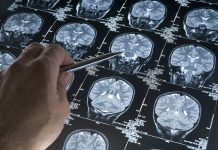Neurological diseases are the foremost cause of ill health and disability worldwide. Open Access Government offers an overview of the prevalence of these conditions
The escalating incidence of neurological diseases has emerged as a grave public health concern, with data showing that more than three billion people worldwide were living with a neurological condition in 2021. (1) These disorders, ranging from migraine to the profound debilitation of stroke, Alzheimer’s, and Parkinson’s diseases, collectively exert a substantial toll on individuals, healthcare infrastructures, and economies worldwide. The socioeconomic impact of neurological diseases is profound, as they often lead to significant healthcare expenditures and productivity losses. Research by Roche details how, in 2020, the total cost of neurological disorders in Europe was $1.06tn, equivalent to the combined cost of heart diseases, cancer, and diabetes. (2) This underscores the urgency for effective intervention strategies to mitigate the rising tide of neurological disorders. Such strategies include addressing modifiable risk factors, enhancing healthcare access, and leveraging technological advancements in treatment and care.
As the global population ages, the prevalence of neurological diseases is estimated to rise dramatically, presenting a daunting challenge to the sustainability of health systems and existing care models. Parkinson’s disease and Alzheimer’s disease are two of the most common neurological conditions. As per the World Health Organization (WHO), the prevalence of Parkinson’s disease (PD) has doubled in the past 25 years. Global estimates in 2019 indicated that there were over 8.5 million individuals with PD. Current estimates suggest that in 2019, PD led to 5.8 million disability- adjusted life years (DALYs), an 81% increase since 2000, and caused 329,000 deaths, an increase of over 100% since 2000. (2)
The intricate interplay between genetic, environmental, and lifestyle factors complicates the quest for effective interventions and preventive measures. Consequently, the imperative to address the intricate web of issues surrounding the management of neurological diseases becomes increasingly urgent.
Risk factors
Since many neurological conditions are without cures, it is vitally important to understand the modifiable risk factors associated with neurological diseases. According to an analysis published by The Lancet Neurology – which quantified the proportion of nervous system burden that was potentially preventable by eliminating known risk factors for diseases including stroke, dementia, multiple sclerosis and Parkinson’s disease – modifying 18 risk factors over a person’s lifetime—most importantly high systolic blood pressure (57% of DALYs)—could prevent 84% of global DALYs from stroke. (3)
Lifestyle factors such as smoking, lack of physical activity, and poor diet can elevate the risk of neurological diseases. Equally, exposure to pollutants, toxins, and other hazardous substances can detrimentally affect neurological health. Understanding the correlation between these risk factors and neurological diseases is paramount.
Genetic predisposition and socioeconomic disparities also play a crucial role in an individual’s susceptibility to neurological disorders.
Regional burden differences
Over 80% of neurological deaths occur in low- and middle-income countries (LMICs). (3) While regional disparities in the burden of neurological disorders are evident, factors such as socioeconomic development and healthcare access play a critical role in these variations. (4) Nations like Italy, Norway, and the US were particularly affected, indicating that even within prosperous regions, the burden can differ significantly.
Moreover, healthcare improvements have had a varied impact on incidence rates. Regions with advanced healthcare systems have been able to provide better management and treatment of neurological diseases, potentially leading to a higher reported incidence but a lower mortality rate due to these conditions.
Policy initiatives
Increased life expectancy is a positive indication of health systems’ improvements. However, this increase has also led to a rise in age-related neurological disorders. These necessitate global health policies that focus not only on survival but also on prevention, early diagnosis, and minimising health loss due to disability.
International collaboration is essential for making progress in neurological research. For example, the Japan Agency for Medical Research and Development (AMED) aims to foster collaboration in neuroscience and neurodegenerative disease research. Japanese researchers recently developed a blood serum assay that can identify specific neurodegenerative diseases by detecting abnormal α-synuclein. This protein is associated with synucleinopathies, a group of neurodegenerative diseases.
The study’s authors said: “Our new IP/RT-QuIC assay may have many future applications as a biomarker for precise diagnosis and monitoring of treatment of neurodegenerative diseases in clinical trials. This simple diagnostic method will enable the establishment of personalized therapy options for synucleinopathies.” (5) Advancements in biomarker research for neurological conditions could one day support the early detection of diseases and simultaneous monitoring of multiple biological pathways in response to advanced therapeutic interventions. (6)
Policy measures must strive to ensure that the latest scientific discoveries are incorporated into policy frameworks and collaborate with researchers to adapt findings for practical application.
Partnering with healthcare providers, patients, and advocacy groups is critical to aligning efforts and facilitating dialogue between the scientific community and policymakers.
Recognising regional disparities in the impact of neurological diseases, policy initiatives are crucial in transforming research insights into tangible health policies and practices. These initiatives serve as a bridge connecting the scientific understanding of neurological conditions with the actual measures taken to prevent and manage them.
Likewise, policymakers must increase public awareness of neurological conditions by initiating campaigns to educate the populace on the nature and implications of neurological diseases. For example, awareness of stroke and preventive measures is less compared to heart attacks, even though it is one of the most common causes of death/disability and admission to emergency rooms. The symptoms of a stroke can resemble those of other conditions, like acute vestibular syndrome. This syndrome is marked by a sudden onset of vertigo, nausea/vomiting, and unsteady walking, which can be caused by vestibular neuritis (VN) or posterior circulation strokes. It is estimated that up to 25% of acute vestibular syndrome cases seen in emergency departments are due to posterior circulation infarcts. Therefore, it’s crucial to diagnose these conditions promptly.
Through concerted efforts, policymakers and healthcare providers can help to alleviate the burden of neurological diseases, ensuring that policies are also effectively implemented and embraced by the communities they are designed to serve.
References
- https://www.who.int/news/item/14-03-2024-over-1-in-3-people-affected-byneurological-conditions–the-leading-cause-of-illness-and-disability-worldwide
- https://www.who.int/news-room/fact-sheets/detail/parkinsondisease#:~:text=Assessment%20and%20disease%20burden&text=Global%20 estimates%20in%202019%20showed,of%20over%20100%25%20since%20 2000.
- https://www.healthdata.org/news-events/newsroom/news-releases/lancet-neurology-neurological-conditions-now-leading-cause-ill
- Huang Y, Li Y, Pan H, Han L. Global, regional, and national burden of neurological disorders in 204 countries and territories worldwide. J Glob Health. 2023 Nov 29;13:04160. Doi: 10.7189/jogh.13.04160. PMID: 38018250; PMCID: PMC10685084.
- https://www.amed.go.jp/en/news/release_20230530.html
- Alberto Lleó, Biomarkers in neurological disorders: a fast-growing market, Brain Communications, Volume 3, Issue 2, 2021, fcab086, https://doi.org/10.1093/braincomms/fcab086








